Mostar is one of the most idyllic little towns you will come across in Europe. It’s located in the South Western region of Bosnia and Herzegovina and is pretty close to the borders of both Croatia and Montenegro.
This destination is rapidly growing in popularity with tourists from all over the world. Mainly due to the beautiful and iconic bridge nestled in the centre of the Old Town. The Stari Most bridge was built by the Ottomans in the 16th Century and is a stunning piece of Islamic architecture.
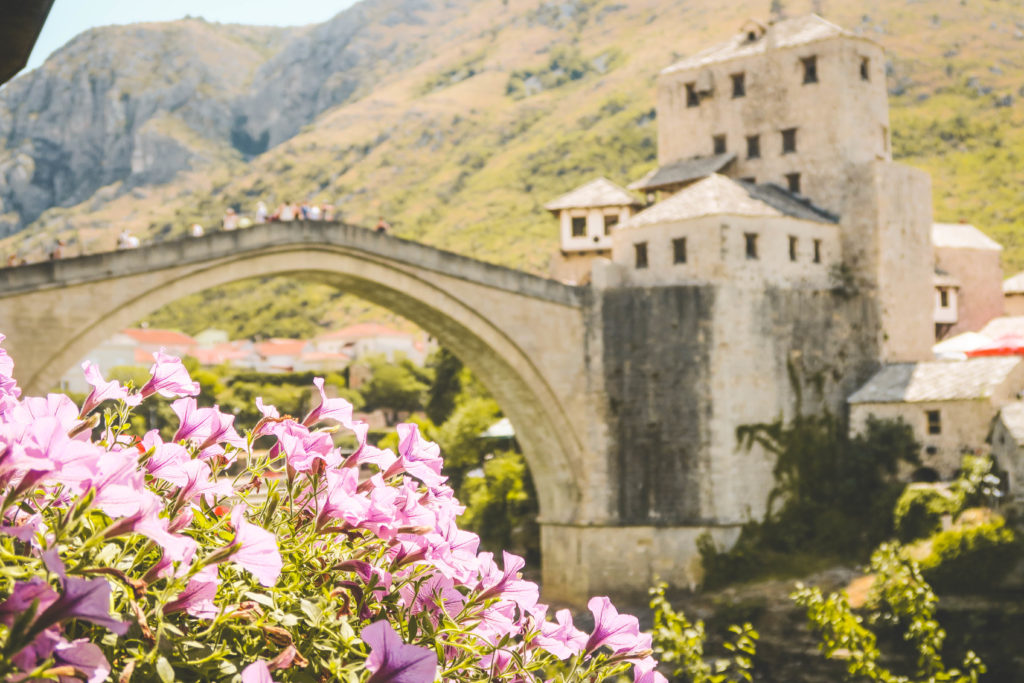
And while Mostar may look beautiful to us tourists and travelers, this place has a dark story which took place not too long ago.
It’s taken me a while to wrap my head around what has happened here to be able to write this post about it.
I’ll share the basics, as there is so much that went on, and I will never understand it fully having not lived through it myself. But I feel if you are thinking of traveling to Mostar and to Bosnia and Herzegovina in general, then you need to be aware of the war that took place here in the 90s.
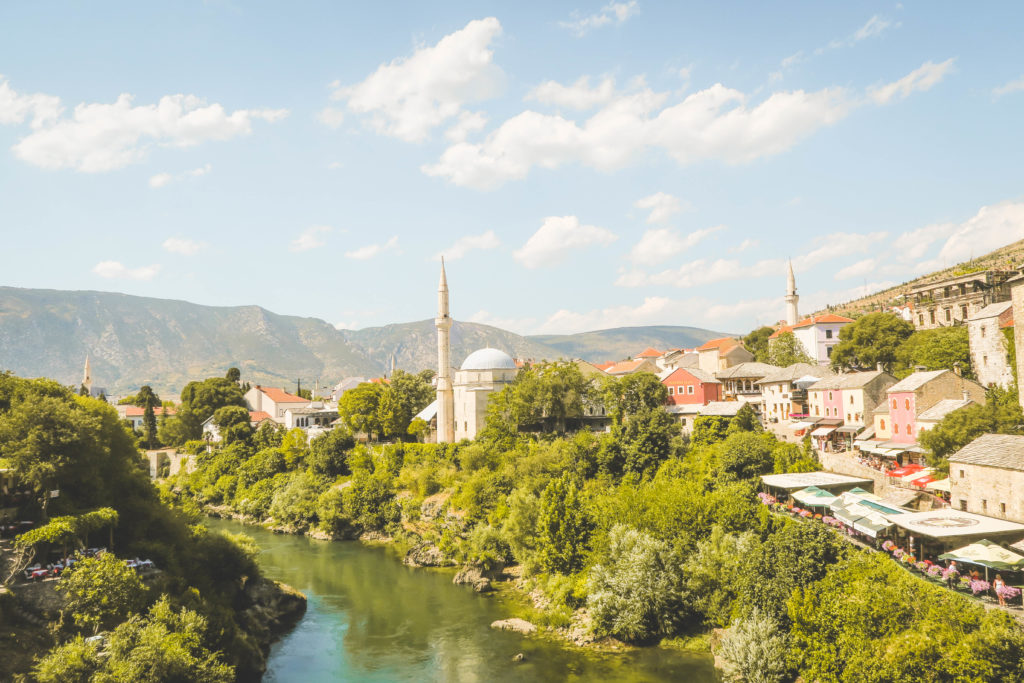
WHERE IT ALL BEGAN
Let me start off with saying that in 1991, the population in Bosnia was at about 4 million people. The main ethnic groups were 44% Bosniak (Bosnian-Muslims), 31% Serbian, and 17% Croatian.
After Bosnia announced their independence from Yugoslavia back in 1992, the country became divided into these three ethnic groups of Muslims, Croats, and Serbs.
With rising tension, Serbia started undertaking an ‘ethnic cleansing’ with the vision of a ‘greater Serbia’. Now an ethnic cleansing isn’t the same as genocide. Genocide has the intention to wipe out an entire race. Whereas ethnic cleansing has the intention to clear out a specific race or races within a certain geographic location or locations. This can be done through murder, rape, torture, or forced removal. And this is exactly what the Serbs did to the Bosniaks and Croats in many areas of Bosnia.
For instance, in Srebrenica, over 8,000 men and boys were held and killed. While women and children were raped and bussed out; becoming refugees. All while during this time, the UN refused to intervene.
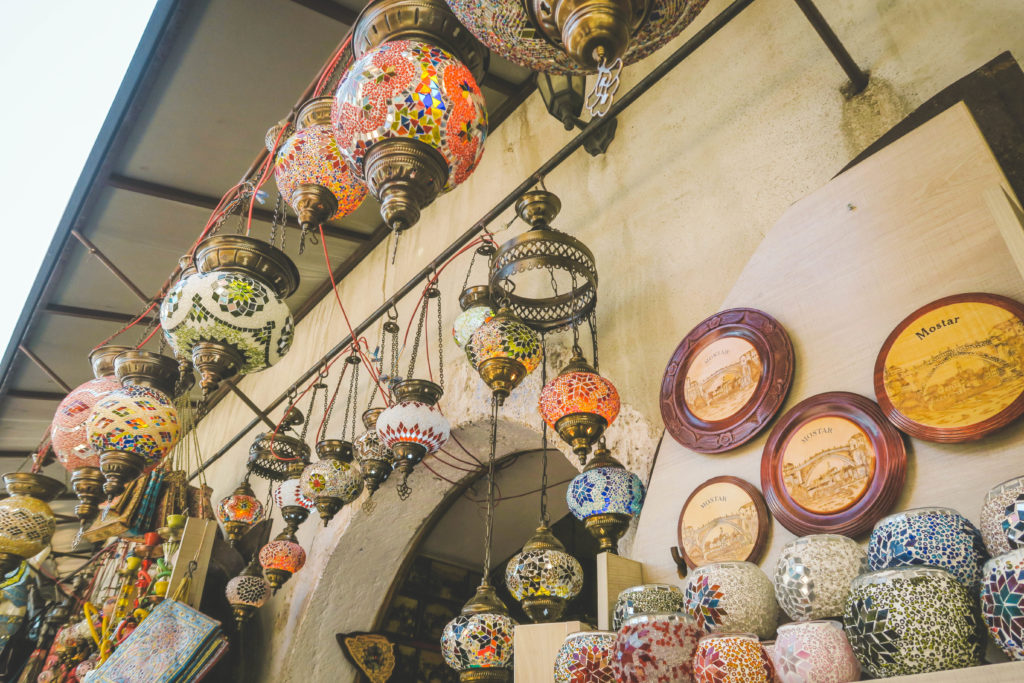
WHAT HAPPENED IN MOSTAR
Mostar was one of the Serb’s targets. Mainly muslims resided here, and it was such a beautiful town that Serbia wanted to control. Both the Bosniak army and the Croat army drove the Serbs out though.
Now, once the Serbs were driven out, the Croats then started a war with the Bosniaks for the control of Mostar. This war between the Croats and Bosniaks lasted from 1992-1995. The Croats had control of West Mostar, and 60,000 Bosniaks we under siege in the East; almost all were Muslims.
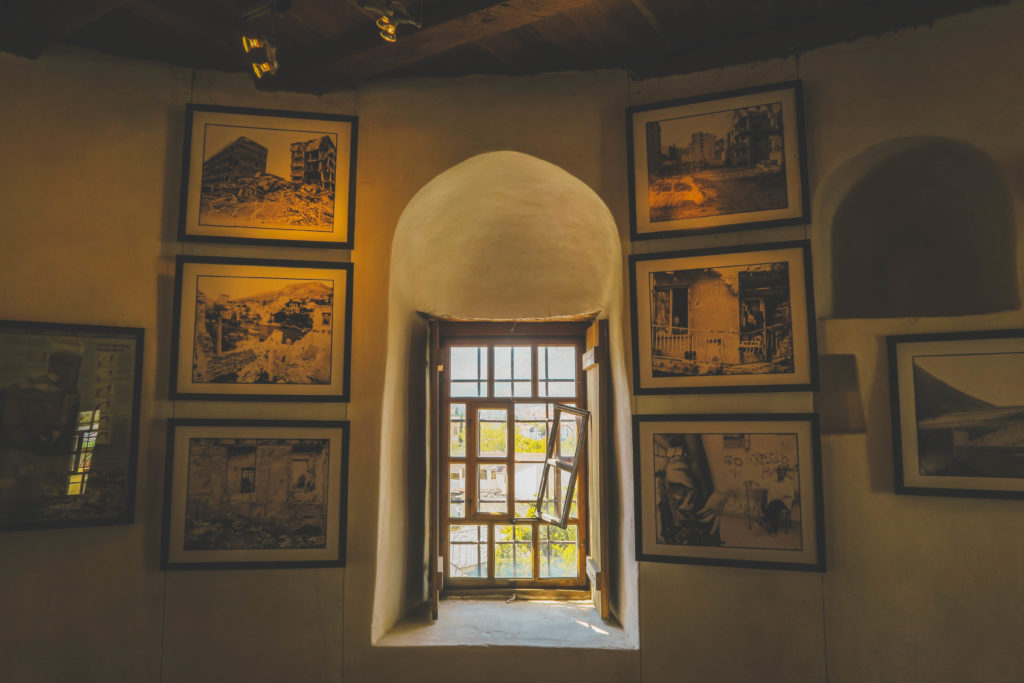
Why were the Croats doing this?
It is said that the Croats hated the Muslim religion and didn’t want to co-exist anymore; hence why they drove them out of the West side.
I cannot even begin to fathom what life was like for the Bosniaks during these years of war. While I was in Mostar, I went on a war tour where we heard accounts of what it was like. There was no power and barely enough food, as international aid couldn’t make it through very often. If a Bosniak could see any houses/buildings on the West side from where they were standing, that meant they were in sniper range and could die.
There was a daytime curfew for the East side, to help minimise the risk of civilians getting shot. The Stari Most bridge had wooden planks running along the top, to provide some shelter from snipers while crossing. To make the odds worse, the Bosnian Army had very few weapons and resorted to making their own bombs.
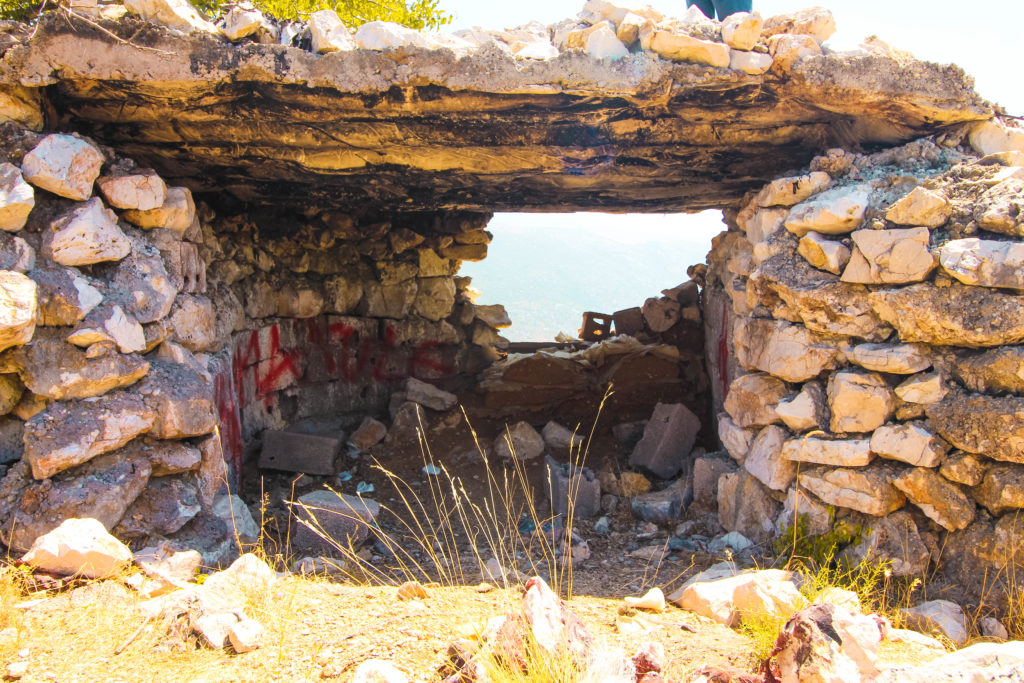
The Bosniak’s put up a great defence over these years, despite their hardships. They were fighting for their home and for their survival. They had more to lose than the Croats, and that’s what kept them going. Even for members of the Bosnian Army who weren’t muslim, they were fighting for the principle of human rights, having seen first hand what was being done to the Bosniaks.
Everyday Bosniaks were thrown out of their homes, to become refugees. They were considered ‘lucky’ that they were thrown out on the streets, left to seek refuge somewhere and not murdered on the spot. However, many were fired upon when fleeing from their homes, and women were raped before being thrown to the streets.
The biggest blow to the Bosniak morale occurred in November 1993 when the Croats blew up the Stari Most bridge. This was the staple piece of Mostar and something the people were proud of. Again, no one came to their aid.
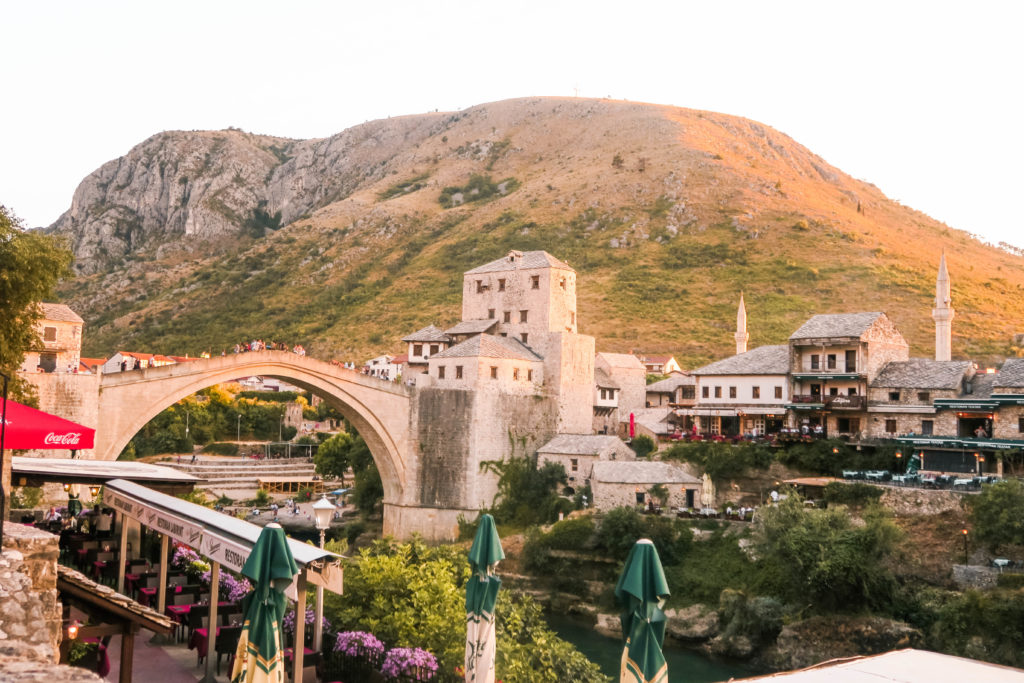
THE WAR’S END
By 1995, over 200,000 people had died before NATO decided to intervene and stop the war between the Serbs, Croats, and Bosniaks. Why it took so long is a question that lingers here. And one that shines a light on our imperfect world.
Nowadays in Bosnia, the political situation is a rare one. There are 3 presidents, each representing one of the 3 main groups of Bosniaks, Serbs, and Croats respectively. And the country is still very divided.
Our tour guide mentioned that the Croats in West Mostar consider that area to be Croatia. And that a Bosniak would not be welcome in any bars or restaurants in the West. They are even unable to use the football stadium over there and had to build a new one in a different area. He went on to say that it is rare for a Croat to come into Mostar Old Town. Especially to walk along the bridge. So within Mostar there is a clear divide between the Croats and the Bosniaks.
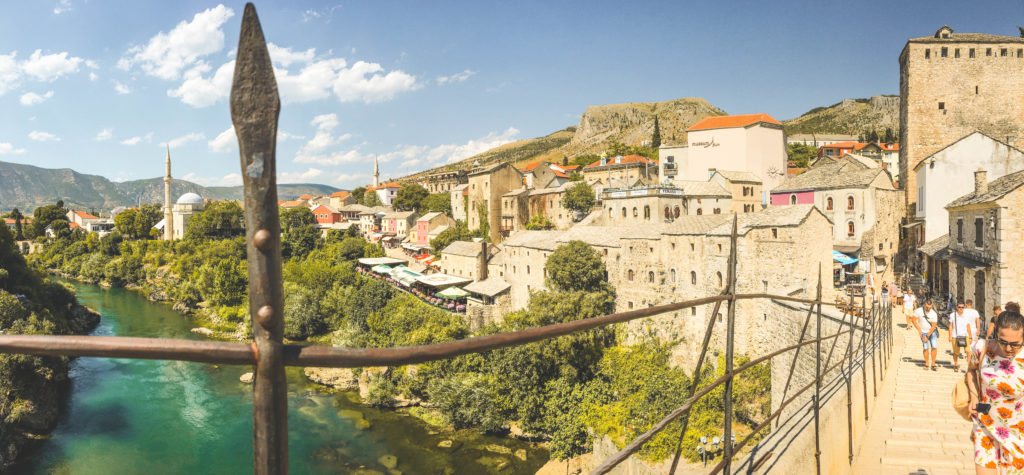
And this makes sense… The wounds here are still fresh. The people who were apart of the war are still living; their memories of this horrific time still with them every day.
I can’t even imagine living down the road from someone who killed my family member. Or from an old prison guard who tortured me everyday. How do you move on from that?
Everyone here has lost someone close to them. Everyone here has their story to tell.
And these stories will be passed on generation to generation. No doubt hate will be passed on from generation to generation. I just hope in time, less hate gets passed on, but rather lessons do instead.
Otherwise, it could be likely that another war will break out in the effort for revenge.
MY EXPERIENCE IN MOSTAR
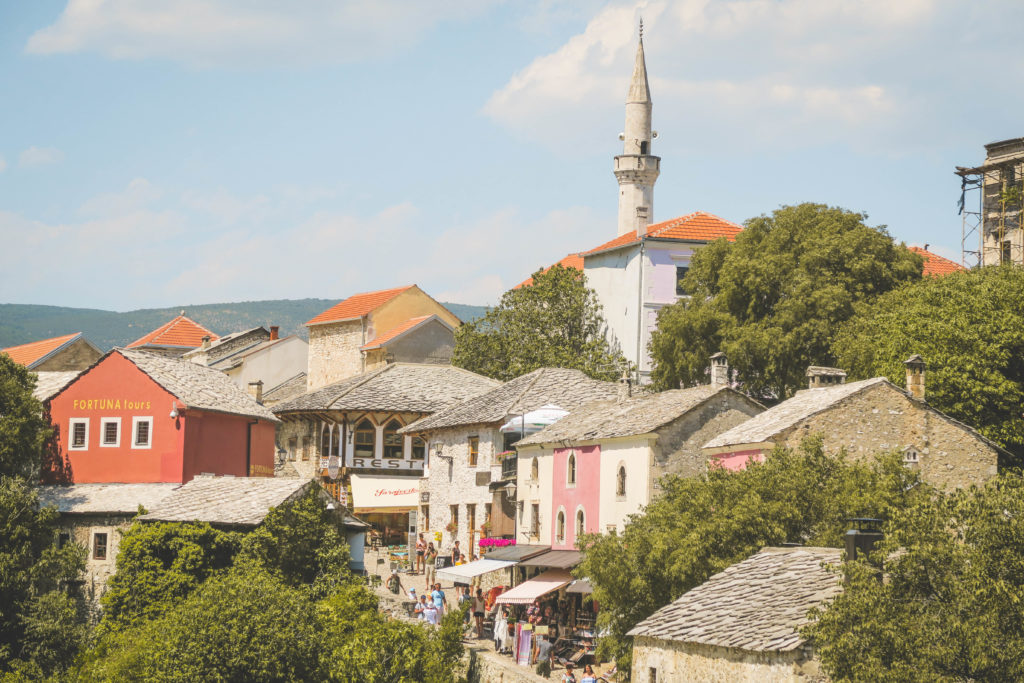
Here’s the thing, I do not want to portray Mostar in a bad light. This place is stunning, it really is. I just feel you cannot come here as an ignorant tourist or traveler and not take the time to learn about Mostar’s past. While here, I encountered many tourists just visiting to see the bridge and the pretty stream running through the beautiful Old Town, while not really having a damn clue about the history and hardships the people here have endured to protect this town.
It’s undeniable that Bosnia is an attractive place to travel in Europe as it’s cheaper than the other European countries. But it’s cheap here because of the effects of the war. Bosnia has an unemployment rate of over 44% and wages here are much lower than what is needed. I advise not to come here and flash your money around. Don’t haggle for ridiculously low prices in the markets. Be humble. You nor I may never know the depth of the suffering here but be understanding.
The people of Mostar are resilient and amazed me. It’s easy to travel here and see the smiling faces and have no clue of the past. This astounded me that those who have been through so much, can still find joy in their lives and work hard at moving on.
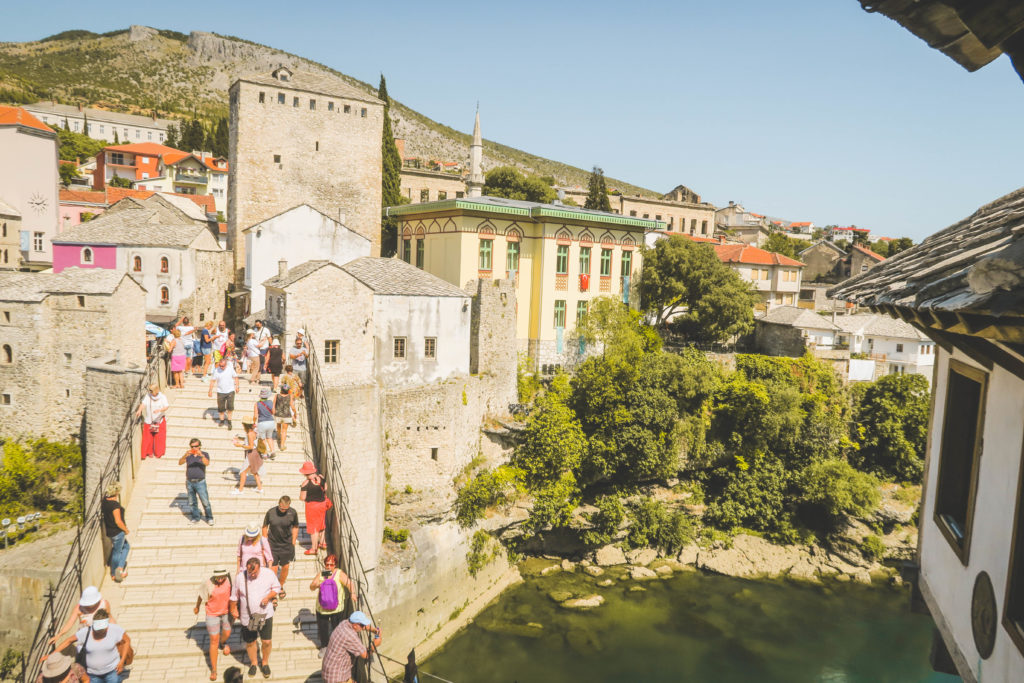
The beautiful town and people of Mostar is and are something you have to go and see and experience for yourself. Admire the beauty of course. But also pair that with taking the time to learn about the war.
I stayed at the Nomad Hostel while in Mostar. They offer a full day tour; half of which is about the war, and the other half is to the Kravica falls. I recommend this tour to find that mix of sightseeing and knowledge. You can see our vlog of the tour here.
Also here is a documentary if you would like to learn more about the war in Mostar.
P.s: I apologise if some of my facts in this post are incorrect. In writing this post I shared what I learned from the tour as well as additional documentaries and articles about the war. If you have any corrections for me, please email hannah@intrepid-introvert.com and I will be happy to amend.

